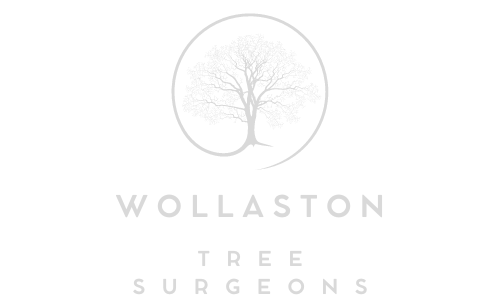Trimming Trees for Storm Recovery
Introduction: Storms can wreak havoc on your property, leaving behind fallen branches, damaged trees, and a landscape in disarray. While it’s impossible to prevent all storm damage, proactive tree trimming can significantly reduce the risks and aid in the recovery process when a storm strikes. This blog post will explore the importance of trimming trees for storm recovery and how Wollaston Tree Surgeons can help you prepare for and respond to storm-related challenges.
The Importance of Storm-Ready Trees
Reducing Hazards:
- Overgrown or weakened branches are likelier to break during a storm, posing hazards to people, property, and vehicles. Regular tree trimming removes these risks.
Maintaining Tree Health:
- Pruning can improve a tree’s overall health, making it more resilient to the stresses of extreme weather conditions.
Preventing Structural Damage:
- Well-maintained trees are less likely to suffer structural damage during storms. Trimming can help maintain a strong and balanced tree structure.
Preemptive Risk Reduction:
- Trimming helps identify and address potential problems before they become severe, reducing the chances of storm-related damage.
Tree Trimming for Storm Preparation
Inspection and Assessment:
- Start by inspecting your trees for signs of weakness, disease, or overgrowth. Look for dead or damaged branches and areas too close to structures or power lines.
Strategic Pruning:
- Develop a strategic pruning plan that removes problem branches, especially those that could fall onto your home or other valuable assets during a storm.
Weight Reduction:
- Reducing the weight of tree canopies through trimming can help minimise the risk of branches breaking during heavy winds.
Crown Thinning:
- Crown thinning involves selectively removing branches for better airflow through the tree. This reduces the risk of the entire tree being uprooted during strong gusts.
Remove Deadwood:
- Dead or dying branches are particularly prone to falling during storms. Removing them in advance can prevent them from becoming projectiles.
Consult with Professionals:
- For large or complex trimming tasks, or if you have concerns about the overall health of your trees, it’s advisable to consult with experienced tree care professionals like Wollaston Tree Surgeons. They can assess the situation, recommend appropriate treatments, and precisely perform necessary tree trimming.
Storm Recovery and Post-Storm Tree Trimming
Assess Damage:
- After a storm, carefully assess the extent of tree damage on your property. Identify any immediate safety hazards, such as fallen branches or uprooted trees, and address them promptly.
Emergency Tree Removal:
- If trees are severely damaged or pose an immediate threat, consider emergency tree removal services to ensure the safety of your family and property.
Restorative Pruning:
- Engage in restorative pruning to trim broken or damaged branches and help your trees recover. Proper pruning techniques can encourage new growth and promote healing.
Conclusion: Tree trimming is a proactive measure that can significantly reduce the risk of storm-related damage to your property. By investing in regular maintenance and addressing potential issues before they escalate, you can better prepare for storms and minimise the impact of severe weather events. In the unfortunate event of storm damage, Wollaston Tree Surgeons is here to assist with emergency tree removal and restorative pruning, helping you restore your landscape to its former beauty and safety.
Call us on: 01933 823 181
Click here to find out more about Wollaston Tree Surgeons
Click here to complete our contact form and see how we can help with your tree’s needs.

